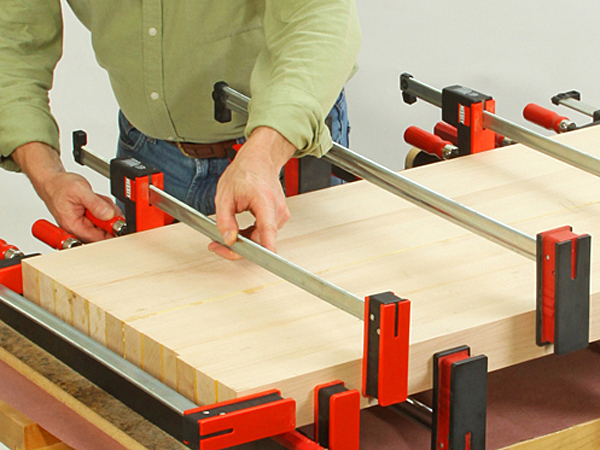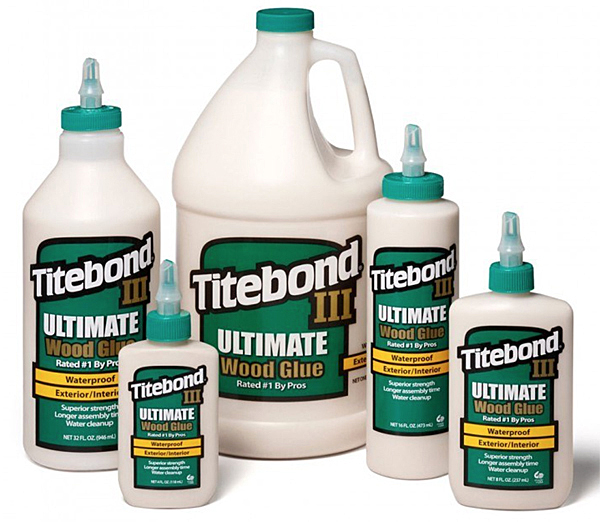
Our church has two butcher block cabinets that we do our food prep on in the kitchen. One is about 3′ X 7′ and the other is about 3′ x 8.5′. The problem is that the blocks are starting to weep food residue (meat/vegetable/fruit) juices into the cabinets below the butcher blocks, so there are apparently cracks between the glued boards. Some on the leadership board think we should replace the blocks, to the tune of several thousand dollars. The surfaces do not look bad and there really is no discoloration to the blocks; however, there is the seepage. So, I am wondering if they can be sanded and resealed so it would stop seeping and we could save several thousand dollars! Is sanding and resealing a better solution than replacement? If the sanding and resealing is our best option, what would we use to sand and reseal the blocks? We have several woodworkers in the church that could do the work. Thank you for your assistance! – Larry Ruebling
Tim Inman: I remember back in the 1970s when wooden cutting blocks were replaced by white poly cutting surfaces. The idea was that wood was somehow inherently unsanitary and plastic was clean. Later, after research (ref. Forest Products Research Station @ University of Wisconsin), it turned out that the wooden surfaces were not necessarily unsanitary. They could be used and kept clean with ordinary maintenance. Plastic, on the other hand, turned out to be more problematic in its cleaning and sanitation needs. So, wood is not automatically to be rejected. However, from your description of your cutting surfaces, it would seem to me that inferior joinery makes your blocks unusable for food prep work. I would replace those tops and not look back. Weeping food goo isn’t good and certainly could make folks ill. Get new tops.
Chris Marshall: I worked for many years during high school and college breaks at a corner grocery store. There was a meat counter in back with an enormous butcher block for processing all manner of fresh meats. I spent many hours deboning scraps, cutting up chickens and processing deer on that block. It was a “true” butcher block, too — glued-up maple laminations with the end grain of each piece facing up toward the work surface. Being a close-grained wood, the end grain never seeped juices down through the block and onto the floor. We simply scraped off any residue periodically throughout the day and sprayed it down routinely with a solution of ammonia water followed by a good scrubbing–no sanding or sealing, ever.
Maybe your church butcher blocks are made of an open-grain wood that could be draining those fluids right down the hollow xylem tubes in the end grain or, as you suggest, the joints between the laminations are separating enough to allow for seepage. Regular water exposure can certainly delaminate wood joints, especially if the correct glue wasn’t used in the first place.
In any case, I agree with Tim on this one. While it’s unfortunate that the butcher block is leaking, what’s coming out the bottom is probably both disgusting and possibly even a lure for insect pests. I’ll bet a health inspector would take one look under them and require that those be replaced, especially in a public-use kitchen.
Here’s a suggestion: have your church woodworkers build replacement butcher blocks instead. Or, as a cost-saving measure, replace just one of those large surfaces and put a conventional countertop over the other set of cabinets. I’d make the cutting surface from hard maple in 8/4 thickness, glued up with a waterproof glue, such as Titebond III. With donated labor, it won’t cost thousands to replace — and I’ll bet if you approached a local lumberyard with a request on behalf of your church, they’d probably give you a neighborly discount on the lumber. As Tim suggests, just because a food prep surface is wood doesn’t make it bad. But, choosing the right species and gluing it up with the correct adhesive could make all the difference in terms of the surface’s longevity and how sanitary it can be kept.






